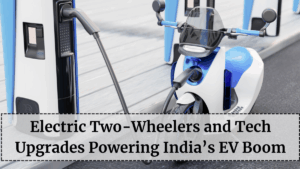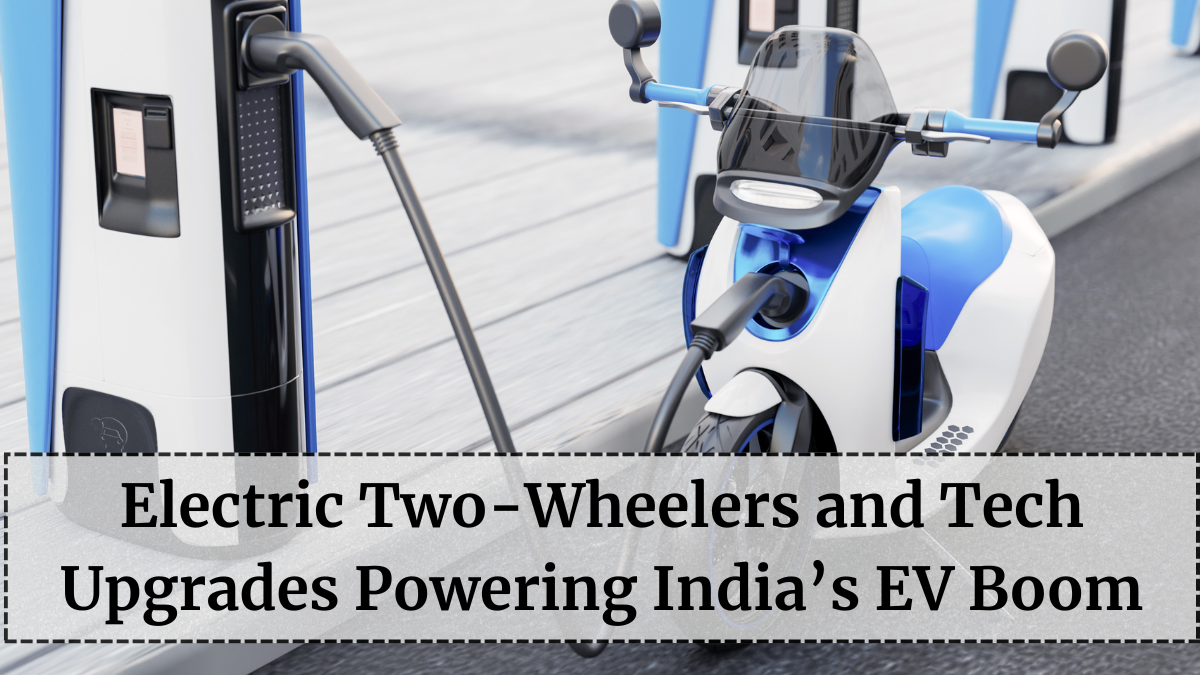India is experiencing a historic transformation in personal mobility. As cities grow denser and fuel prices soar, electric two-wheelers have emerged as the most popular and practical choice for daily commuters. In 2025, the market is witnessing explosive growth fueled by improved technology, government incentives, and the arrival of smarter, longer-range electric scooters and bikes.
From tech-driven startups to legacy automakers, everyone is investing in EV innovation to make electric mobility affordable, reliable, and futuristic. Let’s explore how technology and innovation are powering India’s EV revolution on two wheels.

The Rise of Electric Two-Wheelers in India
Growing Demand and Market Expansion
India’s EV ecosystem has rapidly evolved from niche adoption to mainstream usage. Sales of electric two-wheelers in 2025 are expected to cross 2 million units, driven by affordable pricing, reduced maintenance, and eco-friendly appeal. Brands like Ola Electric, TVS, Bajaj, Ather, and Hero MotoCorp are leading the charge with diverse models suited for urban and semi-urban riders.
Government Support and Policy Push
The Indian government’s FAME-II (Faster Adoption and Manufacturing of Electric Vehicles) scheme continues to play a crucial role by offering subsidies and tax benefits on EV purchases. In addition, state governments are investing in charging infrastructure, making EV ownership more convenient than ever.
Technological Advancements Driving the EV Revolution
Improved Battery Technology
One of the biggest upgrades in 2025 comes from solid-state and lithium-ion battery innovation. Modern electric scooters now offer ranges between 120 km and 180 km per charge, with fast-charging technology that can replenish 80% battery in under 30 minutes.
Swappable battery systems introduced by Bounce, Gogoro, and SUN Mobility are also making refueling as easy as replacing a cell. This innovation reduces downtime and extends vehicle life.
Smart Connectivity and IoT Integration
The new generation of electric two-wheelers comes with IoT-enabled dashboards and AI-powered analytics. Riders can monitor battery status, track routes, and locate nearby charging stations through mobile apps. Some models, like the Ola S1 Pro and Ather 450X, even receive over-the-air (OTA) updates, ensuring continuous performance enhancements.
Regenerative Braking and Power Efficiency
EVs in 2025 feature regenerative braking systems that convert kinetic energy into stored power, improving overall range. Combined with intelligent torque management, these systems deliver smoother rides and better battery life for city commutes.
AI and Ride Personalization
Artificial intelligence is playing a key role in optimizing the riding experience. AI-enabled EVs can adapt to a user’s driving style, suggesting efficiency modes or predictive maintenance alerts. This makes electric two-wheelers not just vehicles but intelligent companions for everyday commuting.
Affordable Models Redefining Urban Mobility
Ola S1 Air
Priced competitively under ₹1 lakh (after subsidies), the Ola S1 Air offers a 125 km range, app-based keyless entry, and multiple ride modes — making it India’s top-selling EV scooter in 2025.
Ather 450 Apex
The Ather 450 Apex introduces performance-driven riding with improved battery cooling and upgraded software for real-time efficiency tracking.
TVS iQube ST
The TVS iQube ST blends comfort with practicality, offering a digital touchscreen display, 150 km range, and fast charging in under an hour.
Bajaj Chetak 2025
Reviving nostalgia with technology, the Chetak 2025 edition features voice-activated controls, cloud connectivity, and a 3.2 kWh lithium-ion battery pack with 180 km range.
Infrastructure Growth and Charging Network Expansion
As demand surges, India’s EV ecosystem is expanding its backbone — charging infrastructure. Public and private players are setting up thousands of fast-charging points across highways, malls, and residential zones.
Companies like Tata Power, Statiq, and Jio-BP are leading this movement, while smart-grid technology ensures better load distribution and real-time monitoring. By 2026, most tier-1 and tier-2 cities will have accessible public charging networks.
Environmental and Economic Impact
Cleaner Air, Lower Costs
Electric two-wheelers have significantly reduced carbon emissions in urban areas. With zero tailpipe pollution and reduced noise, EVs contribute to a cleaner, quieter India.
For riders, the savings are substantial — the cost per kilometer for electric scooters is as low as ₹0.25, compared to ₹2–₹3 for petrol bikes.
Boost to Local Manufacturing
India’s Make in India initiative and local component production have made EVs more affordable and sustainable. Domestic battery assembly and motor production are reducing dependency on imports while generating thousands of green jobs.
The Road Ahead for India’s EV Two-Wheeler Market
2025 marks just the beginning. The coming years will witness AI-integrated riding systems, wider adoption of battery swapping, and the introduction of solar-powered EVs for rural regions. With policy alignment, improved infrastructure, and ongoing innovation, India is on track to become the world’s largest electric two-wheeler market by 2030.
FAQs
Which is the best electric scooter in India in 2025?
The Ola S1 Air and Ather 450 Apex are among the best-performing scooters in 2025, offering long range, fast charging, and connected features.
How long does it take to charge an electric two-wheeler?
Fast chargers can power most electric scooters to 80% in 30–45 minutes, while home chargers typically take around 3–5 hours.
Are electric scooters cheaper to run than petrol ones?
Yes, electric scooters cost nearly 90% less per kilometer compared to petrol bikes, making them highly economical for daily commutes.
What is the average battery life of an electric two-wheeler?
Most lithium-ion batteries last around 5–7 years or up to 60,000 km, depending on usage and charging patterns.
Will rural India adopt electric scooters soon?
Yes. With battery swapping, solar charging, and government support, electric two-wheelers are gradually expanding into rural and semi-urban regions.
Click here to know more.
